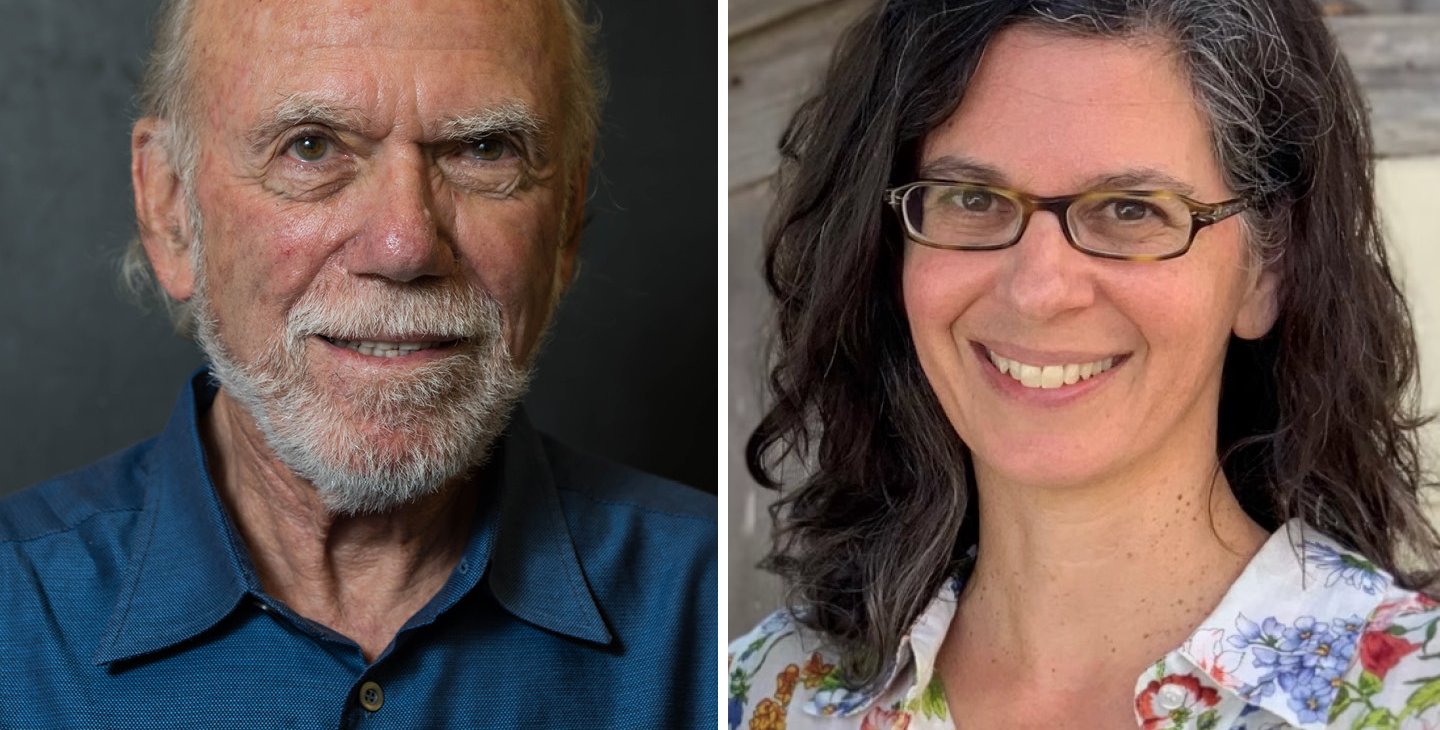Two Caltech faculty members—Dianne Newman, Gordon M. Binder/Amgen Professor of Biology and Geobiology and Merkin Institute Professor, and Barry Barish, Ronald and Maxine Linde Professor of Physics, Emeritus—were elected to membership in the American Philosophical Society (APS).
According its press release, the APS is "the oldest and most distinguished learned society in North America." It was founded by Benjamin Franklin in 1743 "to bring together creative thinkers in the sciences and other fields of study … for the broad purpose of 'promoting useful knowledge.'"
This year, the APS named 38 new members to its society, bringing the total number of elected members to 5,854 members across the society's history.
Newman was born in Buenos Aires, Argentina, in 1971 and spent her childhood in South America and northern Virginia. She attended West Potomac High School in Fairfax County, Virginia, received her BA in 1993 from Stanford and her PhD in 1997 from MIT. Following a postdoc at Harvard Medical School, she joined the faculty at Caltech in 2000, becoming professor in 2006, an HHMI Investigator (2005–2016), Wilson professor at MIT (2007–2010), Gordon M. Binder/Amgen Professor at Caltech in 2016, and Merkin Institute Professor in 2024.
Newman's research focuses on microbial energy conservation and survival when oxygen is scarce. The contexts that have motivated her research are diverse, spanning (ancient) sediments and soils to human chronic infections, yet common to all of them are bacteria found in multicellular aggregates (biofilms). How these organisms thrive on substrates that pose cellular challenges due to their toxicity or sparse bioavailability at the molecular level is the question that has united her investigations. For example, Newman's lab discovered how bacteria respire using arsenate instead of oxygen, how they photosynthesize using iron rather than water, and how they use certain types of secondary metabolites (conventionally thought to be antibiotics) as molecular snorkels to sustain cellular metabolism within the anoxic core of biofilms. Because molecular biosignatures record the earliest history of life on Earth, Newman's mechanistic research has also advanced our interpretation of ancient molecular fossils.
Her lab is highly interdisciplinary. With backgrounds spanning bacterial genetics, biochemistry, electrochemistry, genomics, isotope geochemistry, microscopy, and (bio)physics, Newman's students and postdocs bring multiple perspectives and talents together in creative ways to solve complex problems. Currently, much of their research focuses on phenazines, a class of redox-active metabolites made by diverse biofilm-forming soil bacteria as well as the opportunistic human pathogen Pseudomonas aeruginosa. The redox cycling of phenazines in the absence of oxygen sustains biofilm cells in a nongrowth state that is antibiotic tolerant, with a power output among the lowest ever recorded for any life form. Studies with this system are revealing insights that are leading to new strategies to control biofilms in nature and disease.
Newman has received many honors, including a Packard Fellowship, Eli Lilly and Company-Elanco Research Award, the National Academy of Sciences Award in Molecular Biology, and a MacArthur Fellowship. She is a member of the National Academy of Sciences, American Academy of Arts and Sciences, American Academy of Microbiology, and American Geophysical Union.
Barish was born in Omaha, Nebraska, in 1936 and spent his childhood in Los Angeles. He attended John Marshall High School in Los Feliz (where a nearby intersection was recently named Barry Barish Square in his honor). He received his BA in 1957 and his PhD in 1962, both from UC Berkeley. He began a long affiliation with Caltech as a research fellow in 1963 before becoming assistant professor in 1966, associate professor in 1969, professor in 1972, and Linde Professor in 1991.
Barish dedicated his career to working on some of the most ambitious detectors in physics. He developed the first high-energy neutrino beam experiment at Fermilab and helped to lead an international collaboration that searched for magnetic monopoles; if discovered, magnetic monopoles would help to confirm the grand unified theory that seeks to unify the electromagnetic, weak, and strong forces. That experiment, known as the Monopole, Astrophysics and Cosmic Ray Observatory (MACRO), did not find magnetic monopoles, but it set the most stringent limits on their existence. Barish then led the design of one of the two detectors planned for the Superconducting Super Collider, a large particle accelerator to be built in Texas until it was canceled in 1993.
He joined the Laser Interferometer Gravitational-wave Observatory (LIGO) in 1994 and used his science-megaproject expertise to guide the group through the project's enormous technical and logistical challenges. He led LIGO through its final design stages, while securing funding from the National Science Foundation. He oversaw construction of the two LIGO facilities from 1994 to 1999 and then the installation and commissioning of the initial LIGO interferometers from 1999 to 2005. He then led the development and approval of the next phase of LIGO, called Advanced LIGO, that was commissioned and built between 2010 and 2014, and that would achieve the historic detection of gravitational waves in 2015. Crucially, Barish expanded LIGO from a small group in the 1990s to its modern incarnation, the LIGO Scientific Collaboration (LSC): a collaboration of approximately 1,200 scientists and engineers at 100 institutions in 18 nations.
Barish has won numerous awards including the National Medal of Science in 2023, the Enrico Fermi Prize in 2016, and the Nobel Prize in Physics in 2017 along with LIGO co-founders Kip Thorne (BS '62), Caltech's Richard P. Feynman Professor of Theoretical Physics, Emeritus, and Rai Weiss, professor of physics, emeritus at MIT.

